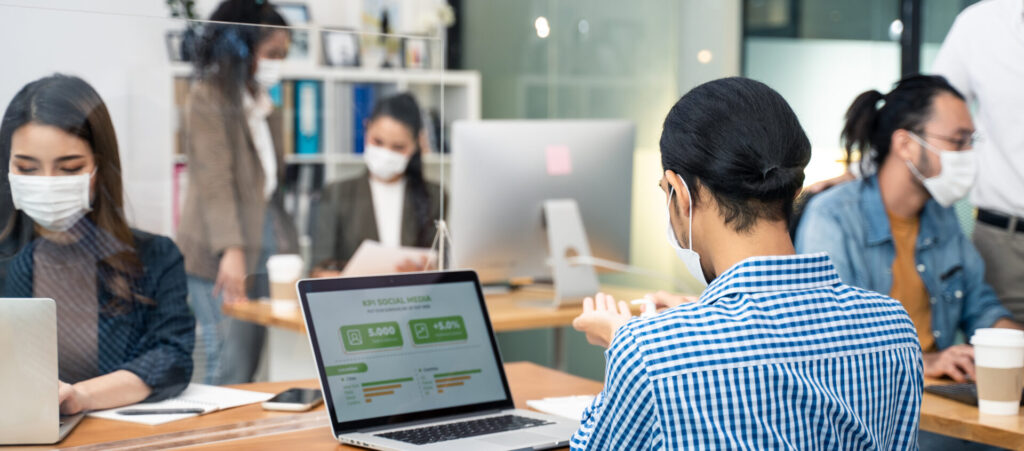
What COVID means for the future of office space
Understanding shifts in the office may bolster success post-pandemic
When COVID-19 cases took hold around the world, the pandemic catalyzed seismic shifts in the office environment. And it turns out some of those changes will impact the future of office space longer-term. A recent study by JLL reveals some intriguing new trends emerging during the global public health crisis and offers insights into how the office space outlook is affected. Let’s take a closer look at the study results and what they could mean for the future of business.
Examining the role of physical office space throughout and post-pandemic
Some may wonder if office real estate will survive these massive shifts to mitigate the risk of viral spread. While much of the American workforce shifted to remote work this spring and summer, the JLL research indicates that the physical office environment remains an essential component of the business world.
Their study included more than 3,000 respondents, workers spanning multiple industries worldwide. And this message emerged loud and clear: physical offices will remain vital to business success in the future. And while that news is heartening, JLL drilled even deeper, revealing tips for maximizing productivity and improving experiences for remote workers and those utilizing the office space of the future.
Reimagining the future of office space after COVID-19
The study showed that remote work and work at the physical office are synergistic, with each contributing to an organization’s success. The trick is tapping the best features of each. In the emerging new world of business post-pandemic, making the most of the combination of these two working styles will be essential. How each company does that to their greatest benefit depends on many factors.
- Company culture and agility. Organizations will need to balance industry changes and their company’s priorities and needs. Individual consideration will have to be given to different roles and responsibilities and how or whether a remote environment works for each particular position. Overcoming obstacles related to remote working will be key, as is having the right technology to overcome productivity issues. While the survey found 2/3 of employees felt they had the tech they needed to work from home, half didn’t feel as productive, indicating that working from home is not ideal for everyone or every position.
- How the organization can leverage at-home employees, office spaces, coworking needs and more. A hybrid model is likely for many organizations, with the ability to bring employees together at times for various durations and in different environments. But even as work arrangements become more flexible, the need to feel connected remains strong. The responsibility to foster an environment that supports connectedness will likely fall upon managers. Physical spaces will morph into a destination for social encounters. Of survey respondents, 60% missed their office when companies switched to a remote workforce. The office environment, as a result, will remain a fundamental hub for employees to engage in valuable interactions, have a sense of structure and feel supported by their leadership.
- The organization’s ability to create an engaging space. Retaining top talent requires designing a workspace that provides safety, security and a reflection of organizational values. Delivering on these responsibilities will help companies become sought-after employers of choice. The pandemic and the resulting work from home shift has shown us the value of physical connection in the workplace. Actual face time is still the best way to innovate and collaborate. At the same time, employees who have become accustomed to the benefits of remote work: the lack of commute, the flexibility, the work-life balance will not want to lose those as we transition into the post-pandemic business world.
The post-pandemic office space evolution
The evolution of office spaces throughout the pandemic and in the wake of it is likely to create lasting changes over the long term. Rethinking our use of space is essential to make the most of the benefits it delivers, even in the face of a primarily work-from-home or hybrid work structure. When it’s time to start rethinking your office environment, we’re here to help. Our design-build model can uncover opportunities to make the most of the transition, whatever your company culture and industry indicate is needed to be successful in the future.